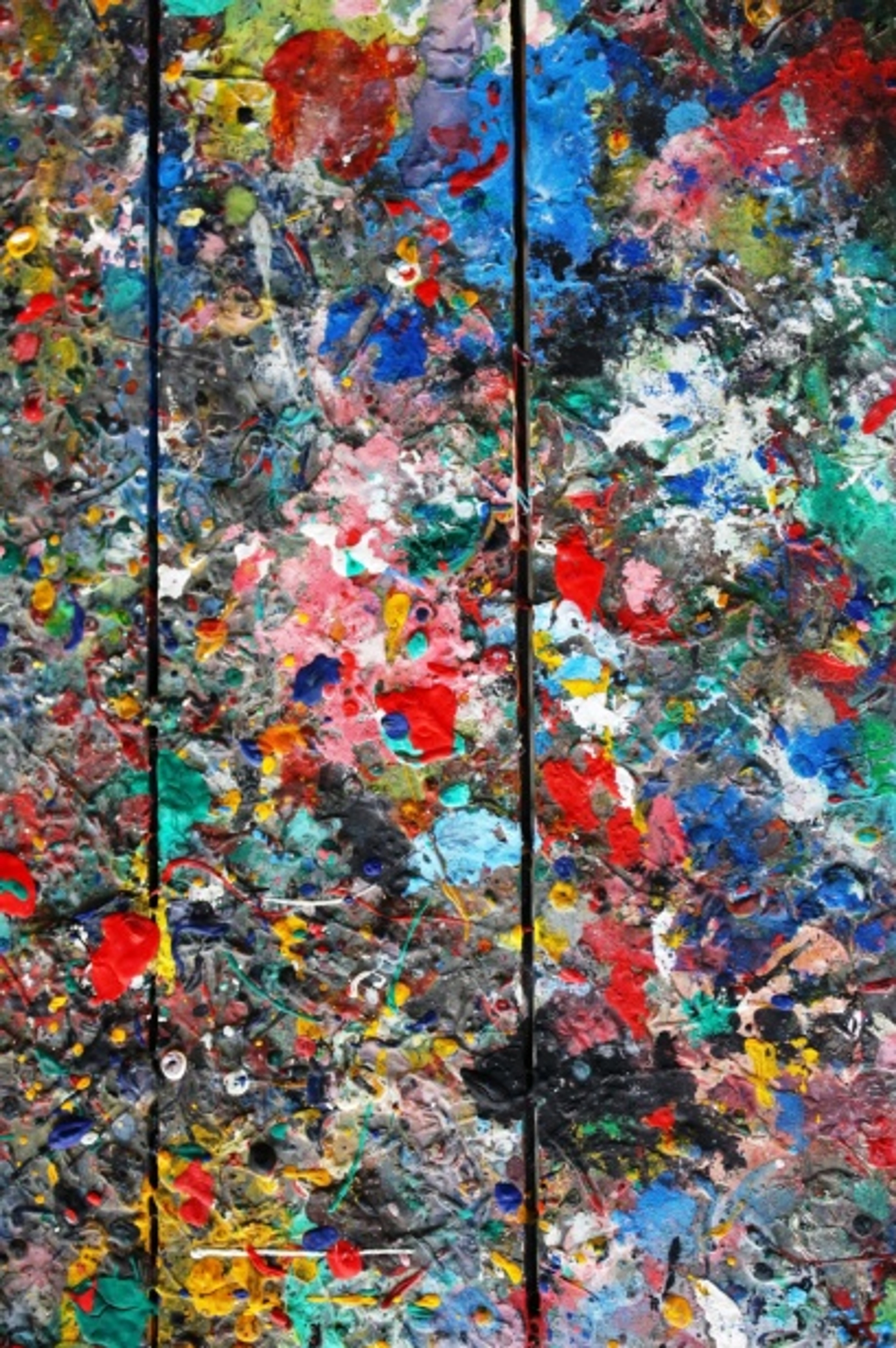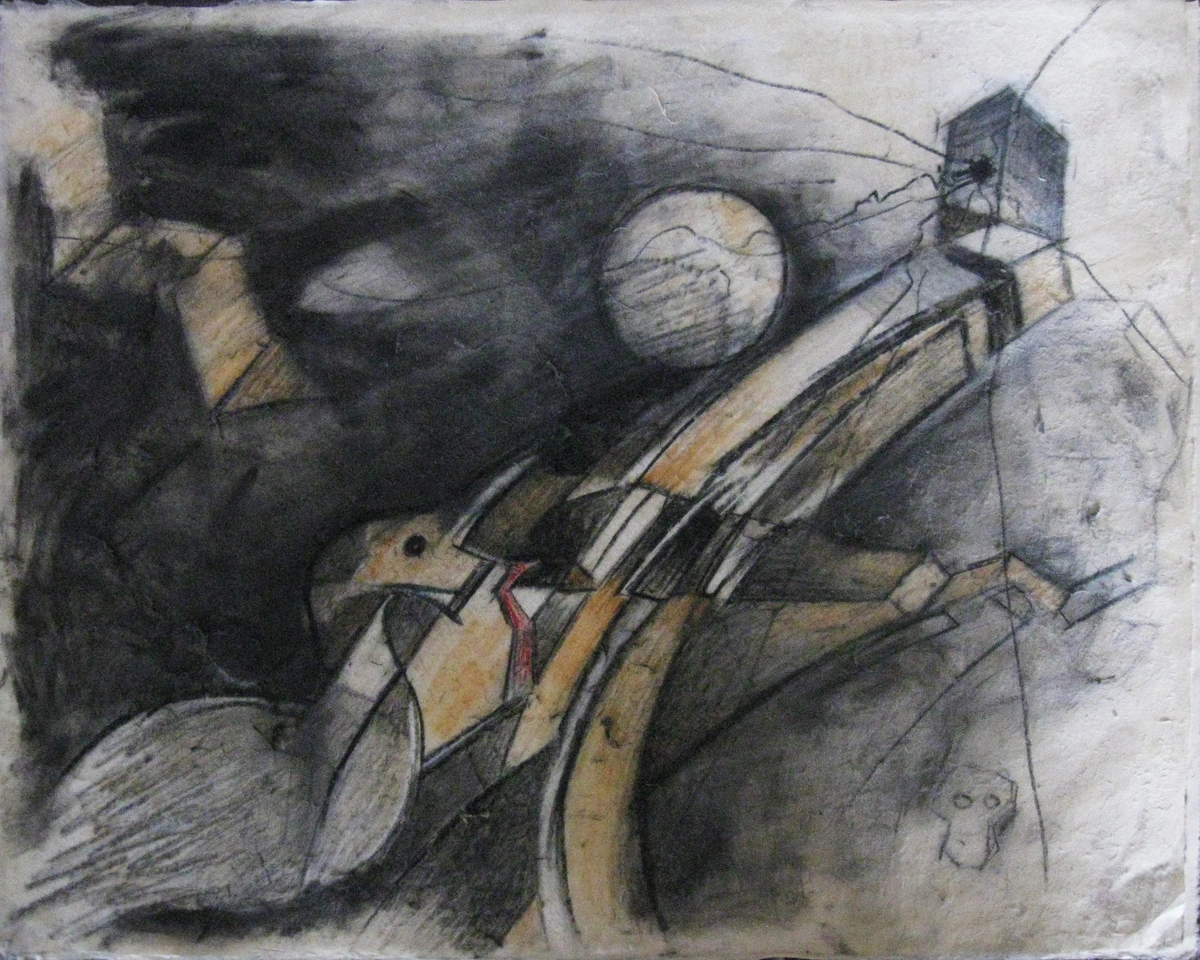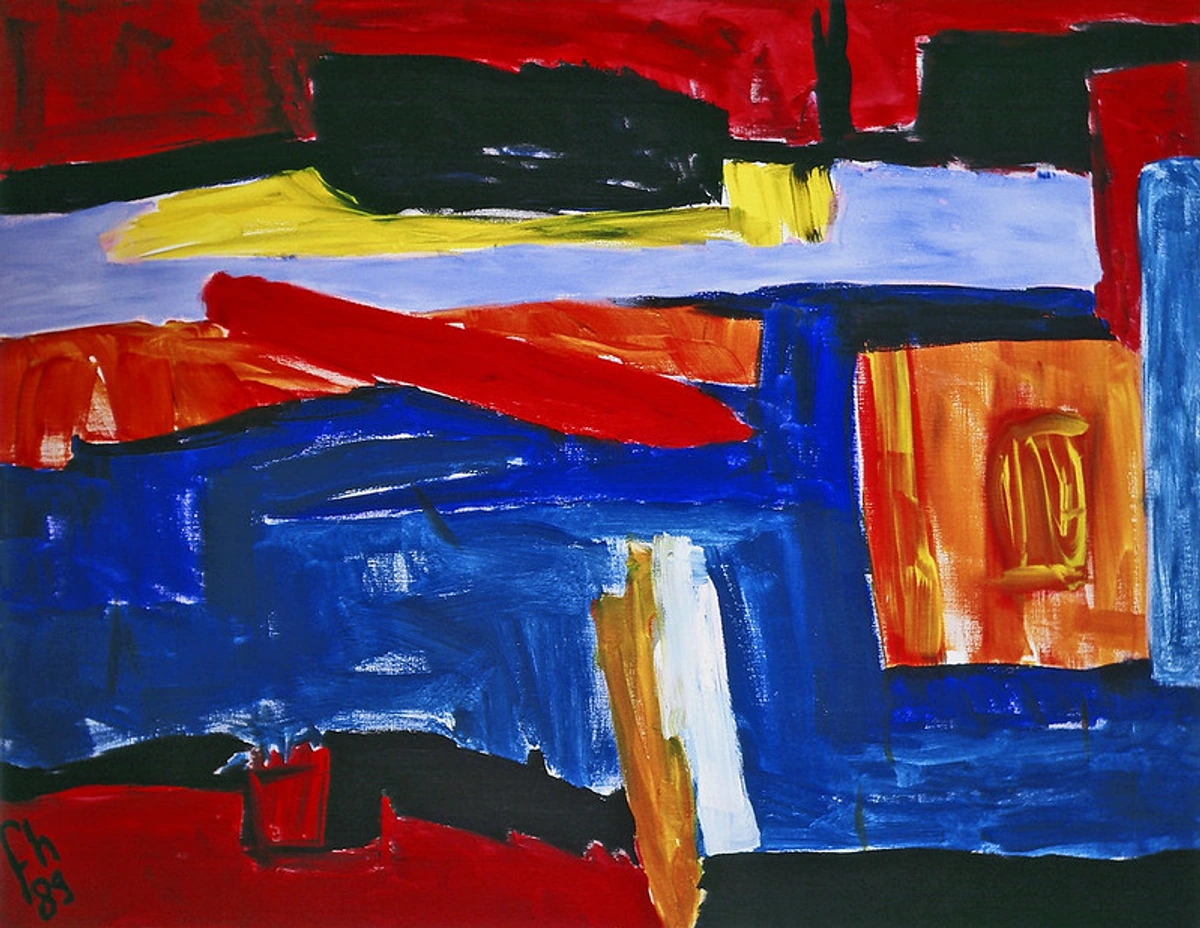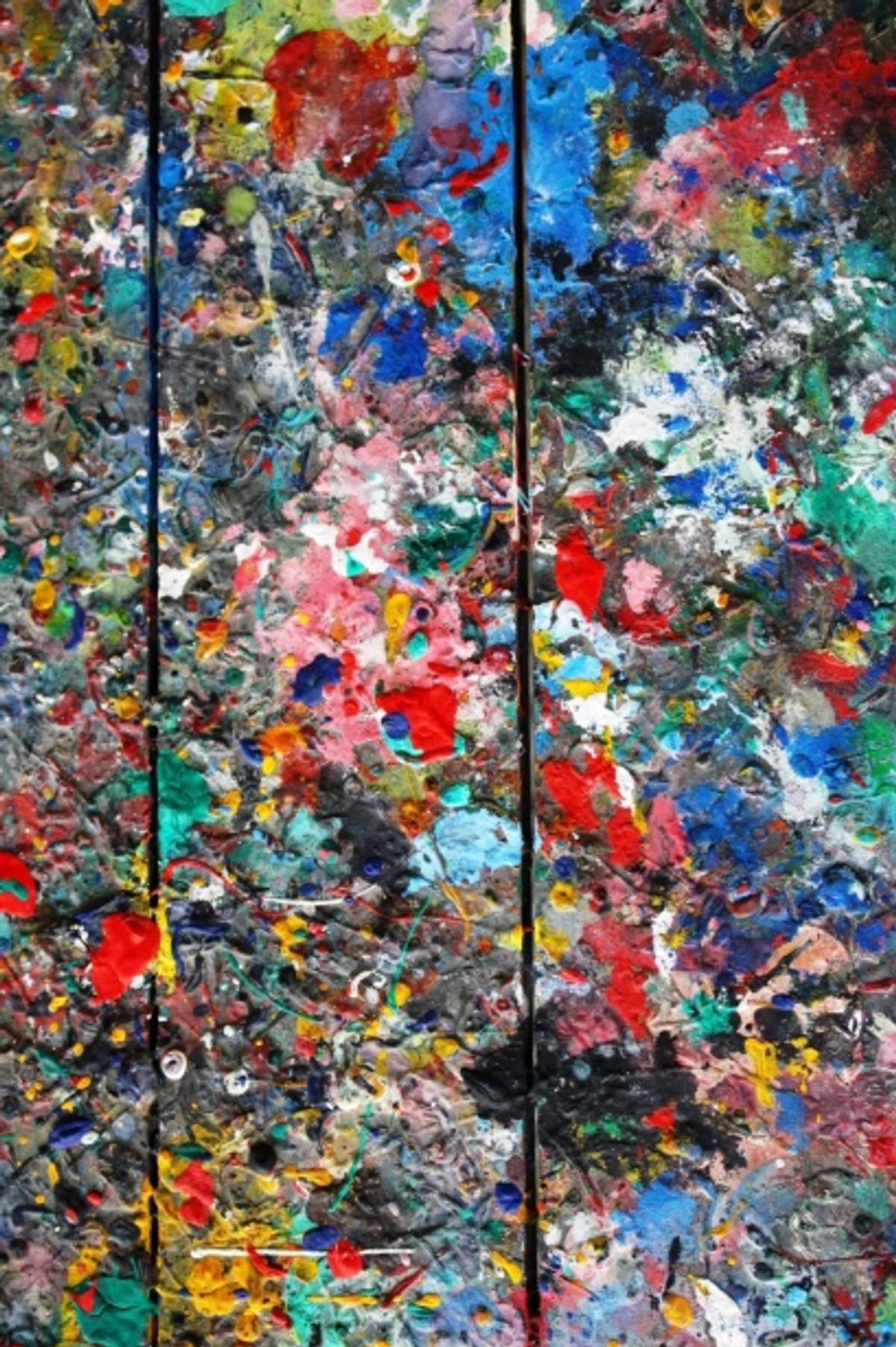
Jackson Pollock: Drip Painting, Abstract Expressionism & Legacy
Dive into Jackson Pollock's revolutionary drip technique, Abstract Expressionism, and personal story. Explore his art's raw power and lasting impact on creativity.
The Ultimate Guide to Jackson Pollock: A Personal Journey into the Drip Master's World
I remember the first time I really saw a Jackson Pollock. Not just a picture in a textbook, but standing in front of one, feeling the sheer scale and intensity of it. Honestly? My first thought was probably something along the lines of, 'My kid could do that.' (Don't judge, we've all been there, right?) Then came the immediate wave of confusion, the 'what exactly am I supposed to get from this?' But then, if I was honest, a tiny crack appeared in that dismissive facade. The longer I looked, the more the initial chaos dissolved into a symphony of controlled energy, a visceral dance captured on canvas. It wasn't just paint; it was a performance, a struggle, a declaration. This initial bewilderment, and the eventual breakthrough, is what I want to share with you as we embark on this journey into the world of Jackson Pollock. In this guide, we'll dive deep into his life, his revolutionary technique, and what his art can teach us about our own creative journeys, because honestly, Pollock's work has lessons for all of us.
Who Was Jackson Pollock, Really? Beyond the Myth
Who was this guy, really? Beyond the myth of the troubled genius splashing paint, Pollock was a fiercely independent spirit from Wyoming, born in 1912. His artistic journey truly began to forge its unique path when he moved to Los Angeles in the early 1930s, studying at the Manual Arts High School. Later, he formally studied at the Art Students League of New York under Thomas Hart Benton. Benton, a regionalist painter, surprisingly instilled in Pollock a discipline and a sense of rhythm – think about the structural underpinnings and dynamic compositional lines in Benton’s murals – that would, ironically, be foundational to his later, seemingly chaotic, drip works. Before he became 'Jack the Dripper,' he was an artist absorbing, struggling, and experimenting, even producing works rooted in figuration and social realism, grappling with tradition before ultimately exploding it.
He wrestled with his demons, yes, battling alcoholism and depression throughout his life, but he also wrestled with the canvas, pushing the boundaries of what art could be. His journey wasn't a straight line; it was a zig-zag of influences. Consider this:
Influence | Impact on Pollock's Art |
|---|---|
| Mexican Muralists (e.g., David Alfaro Siqueiros) | Learned about monumental scale, public art's raw energy, and experimental techniques like pouring paint and using industrial materials (Siqueiros briefly ran a workshop demonstrating these). |
| Native American Sand Painters | Inspired by their ceremonial practice of working horizontally on the ground, creating intricate patterns with natural elements. This resonated with Pollock's later approach to the canvas laid flat, becoming a sacred arena for creation. |
| Jungian Psychology & Surrealism | Introduced him to the power of the subconscious and archetypes, feeding into Abstract Expressionism's focus on inner psychological states and spontaneous expression. |
| Pablo Picasso | Early influences on his figuration, particularly the emotional intensity and distortion, though he ultimately moved far beyond this. |
It's not hard to see how this complex brew of influences, personal torment, and relentless experimentation would soon find its ultimate expression in a movement that changed art forever.

Abstract Expressionism: The Canvas of a Generation
His unique spirit and artistic explorations quickly found a home within the burgeoning movement of Abstract Expressionism. You can't talk about Pollock without talking about this movement. For me, this movement is less about what you see and more about what you feel. It’s about raw emotion, unleashed onto the canvas. Emerging from the shadow of World War II and the anxieties of the Cold War, Abstract Expressionism wasn't just a style; it was a desperate, visceral scream for authenticity in a world grappling with immense trauma. This movement also marked a crucial shift: the center of the art world moved from Paris to New York City, establishing American art as a dominant force on the global stage. It's the artistic equivalent of screaming out your soul, and frankly, who hasn't felt that urge?
Pollock, along with giants like Willem de Kooning and Helen Frankenthaler, wasn't just painting pictures; they were forging a new language for the post-war world. And let's not forget the profound, meditative color fields of Mark Rothko or the stark, powerful zips of Barnett Newman, who also pushed the boundaries of emotional expression through abstraction. If you're curious about the bigger picture, I’ve got a whole article on the ultimate guide to Abstract Expressionism that dives deeper into the movement's heart. What does it mean to paint with pure, unadulterated emotion? Within this fertile ground of Abstract Expressionism, Pollock's unique approach to creation would soon blossom into a revolutionary technique that would define his legacy.

The Drip Technique: A Revolution on the Floor
Now, let's get to the good stuff: the drip technique, often called "action painting." Imagine a canvas laid out on the floor, not propped on an easel. This immediately changed everything; it invited him to move around it, over it, treating the canvas less like a window and more like an arena. Pollock would then drip, pour, splash house paint, enamel, and even industrial paints, sometimes incorporating sand or broken glass for texture. He famously gravitated towards commercial house paints – enamel, aluminum, even common household paints. Why? This was revolutionary. Moving away from expensive, traditional artist-grade pigments, he embraced readily available industrial materials, blurring the lines between art and everyday life. Beyond their affordability, their fluidity and fast-drying nature were perfect for his improvisational style, allowing layers to build without excessive blending, creating those distinct, energetic lines.
This wasn't merely painting; it was a full-body performance, a visceral dance where the artist's entire being was channeled onto the canvas. Moving around, over, and within the work, Pollock transformed painting into an athletic, almost shamanistic ritual, connecting his physical energy directly to the artwork's creation. He worked on monumental scales, often creating "all-over" compositions, meaning the entire canvas surface was treated with uniform emphasis, without a central focal point. This challenges the viewer to engage with the whole field of paint, rather than looking for a specific image. Take his monumental Number 1A, 1948, for instance – it's a vast, immersive field of ceaseless motion where black and white paint aggressively intertwine, punctuated by sharp dashes of silver and red; your eye can never quite settle, constantly following the serpentine trails and explosive splatters, drawing you into its rhythmic frenzy. This wasn't about meticulous brushstrokes; it was about gravity, momentum, and intuition. For me, it's a profound lesson in embracing experimentation and letting go of absolute control, something I constantly battle with in my own practice. It reminds me of the sheer joy of just... making, without overthinking every single mark. What does this radical approach to creation reveal about the artist's inner world, or indeed, about our own creative inhibitions?

Pollock's drip technique wasn't static; it evolved. Early drip paintings, like Full Fathom Five (1947), often incorporated literal objects embedded in the paint, giving a textural, sculptural quality. Later, in his black and white period (around 1950-1951), he stripped away color to focus intensely on line, rhythm, and the sheer physicality of the monochrome, achieving incredible depth and density with just black enamel. By his later color works, while still using the drip, there was sometimes a more deliberate, almost calligraphic quality to the lines, showing a maturing control within his spontaneous method. It proves that even in chaos, an artist can find new ways to speak.
Decoding the Chaos: Finding Meaning in Pollock's Work
But beyond the mechanics of his process, the real magic lies in deciphering the meaning within the seemingly chaotic layers of paint. I know what you're probably thinking: 'But where's the meaning in all that chaos?' And honestly, that's a perfectly valid question. But here’s my take: the meaning isn't in a story or a recognizable object. It’s in the rhythm, the layering, the push and pull of color and line. It’s in the way your eyes move across the canvas, following the trails of paint, finding little moments of focus amidst the frenzy. To really engage, look for the subtle shifts in density, the interplay of thick and thin lines, the accidental pooling of paint, or how a splash of contrasting color pulls your attention. It's an invitation to engage, to feel, to immerse yourself – much like a vast natural phenomenon that demands sensory, rather than purely intellectual, engagement.
For me, it’s akin to standing before a turbulent waterfall – you don't 'understand' it in a narrative sense, but you feel its immense power, its ceaseless movement, its overwhelming presence. Or perhaps it’s like trying to untangle a ball of yarn, where each strand, while part of the whole, has its own unique path. This is how the Abstract Expressionists themselves sought to tap into universal subconscious drives and archetypes through their raw, expressive forms. And trust me, it wasn't an instant 'aha!' moment. I remember years of scratching my head, trying to force a narrative onto his canvases, before I finally allowed myself to just be with the art, to let the energy and rhythm speak for themselves. It’s a bit like learning to meditate, letting go of the need for definitive answers. If you struggle with understanding non-representational art, I've shared some thoughts on decoding abstract art that might resonate. How do you allow yourself to truly feel art, rather than just intellectually understand it? It's a journey into sensory experience, a dance between your eyes and the canvas.
Pollock's Enduring Legacy: Why He Still Matters
Pollock's impact? Massive. He shattered conventions, forcing the art world (and society) to redefine what art could be. He made the process as important as the product, paving the way for countless artists who followed. He shattered the notion that a 'masterpiece' had to be a meticulously planned, easel-bound creation. Instead, he championed raw, unfiltered expression and the inherent energy of the artist's body in motion, elevating the act of painting itself to a performative art.
His revolution paved the way for movements like Happenings, where the artistic event and process became paramount, often directly influenced by Pollock's performative act of painting. You can trace lines from Pollock to the stain paintings of Morris Louis or Helen Frankenthaler, who explored soaked canvases, extending Pollock's emphasis on the inherent properties of paint and surface. Even to the minimalist artists who stripped away narrative to focus on pure form and material, often in monumental scale, Pollock's "all-over" composition and rejection of traditional focal points provided a crucial precedent. His spirit of rebellion, of daring to be utterly original, continues to inspire. He showed that art could be raw, messy, and deeply personal, and still be profoundly impactful. It's a message that certainly shaped my own artist's journey, and I think it resonates with anyone trying to find their own voice. If you’re curious about the broader evolution of abstract art, my definitive guide to its history covers the movements that led to and followed Pollock. What will your legacy be, in whatever creative field you find yourself?
My Personal Takeaway: What Pollock Taught Me About Art and Life
Beyond the textbooks and the critical debates, Pollock's profound impact truly solidified for me in how it resonated with my own creative path. For me, Pollock isn't just a historical figure; he's a reminder. A reminder that art doesn't have to be perfect or pretty to be powerful. It can be vulnerable, chaotic, and incredibly human. His work embodies the idea that embracing imperfection and accidents isn't just okay, it's often where the magic happens. It's about letting go, trusting your intuition, and allowing the painting to unfold. That raw energy, that freedom – it’s something I strive for every single day in my own studio when I paint abstract. Perhaps it's something you can strive for in your own life too, finding beauty in the unplanned, the unexpected, the purely intuitive. And if you're interested in bringing some of that vibrant, expressive energy into your own space, perhaps take a look at my art, because it's a piece of this philosophy in every brushstroke. If you're ever near Den Bosch, consider visiting a museum, as experiencing art in person, just like I strive to deliver in my Den Bosch museum, truly changes everything.
FAQs About Jackson Pollock (And My Honest Answers)
What is Jackson Pollock famous for? He's most famous for his revolutionary drip paintings (also known as action paintings), where he poured and dripped paint onto canvases laid on the floor. It completely broke from traditional easel painting and redefined modern art, introducing the "all-over" composition. It was audacious, a bit scandalous, and utterly unforgettable.
What materials did Jackson Pollock use? Beyond traditional oil paints, Pollock famously embraced unconventional materials. He frequently used commercial house paints (enamel, aluminum paint) directly from the can, which allowed for a fluid, fast-drying application distinct from slower-drying art pigments. He also incorporated sand, broken glass, nails, and other debris into his work, adding texture and dimension to his surfaces. It was all about what he could get his hands on to achieve the effect he desired, blurring the lines between art supplies and everyday objects, and democratizing the materials of art.
What was the critical reception to Jackson Pollock's work? During his lifetime, Pollock's work elicited both intense admiration and scathing criticism. Critics like Clement Greenberg championed him as the greatest painter of his generation, seeing his work as a pure expression of American individualism and a radical leap forward. Conversely, many in the public and even some critics dismissed it as chaotic, childish, or fraudulent, leading to the infamous moniker 'Jack the Dripper.' This polarized reception, however, often solidified his controversial status, cementing his place at the forefront of the avant-garde and igniting crucial debates about the nature of art itself.
Was Jackson Pollock a troubled artist? He absolutely battled alcoholism and depression throughout his life. While it's crucial to avoid romanticizing the 'tortured artist' trope, it's undeniable that his intense personal struggles deeply fueled the raw, often turbulent, energy and emotional depth in his art. His work became an externalization of his inner world, a powerful testament to the transformative, albeit sometimes destructive, power of human emotion.
Where can I see Jackson Pollock's work? Many major museums around the world house his masterpieces. Think the Museum of Modern Art (MoMA) in New York, the Tate Modern in London, or the National Gallery of Art in Washington, D.C. If you ever get the chance, seeing his large-scale works in person is a completely different experience from seeing them online or in books. It’s like standing in front of a living, breathing thing.
So, whether you're a seasoned art aficionado or someone who still thinks, 'My kid could do that,' I urge you: the next time you encounter a Pollock, or any abstract piece that initially makes you scratch your head, take a moment. Don't rush to judgment. Let go of the need to 'understand' in a purely logical sense. Instead, allow yourself to feel it, to immerse yourself in its rhythm and energy. You might just find a whole new world opening up, and perhaps, just perhaps, it’ll inspire you to pick up a brush – or just a can of house paint – and make your own beautiful mess, discovering your own unique connection to the canvas. What's the wildest, most free thing you've created lately?




